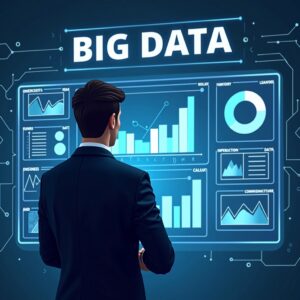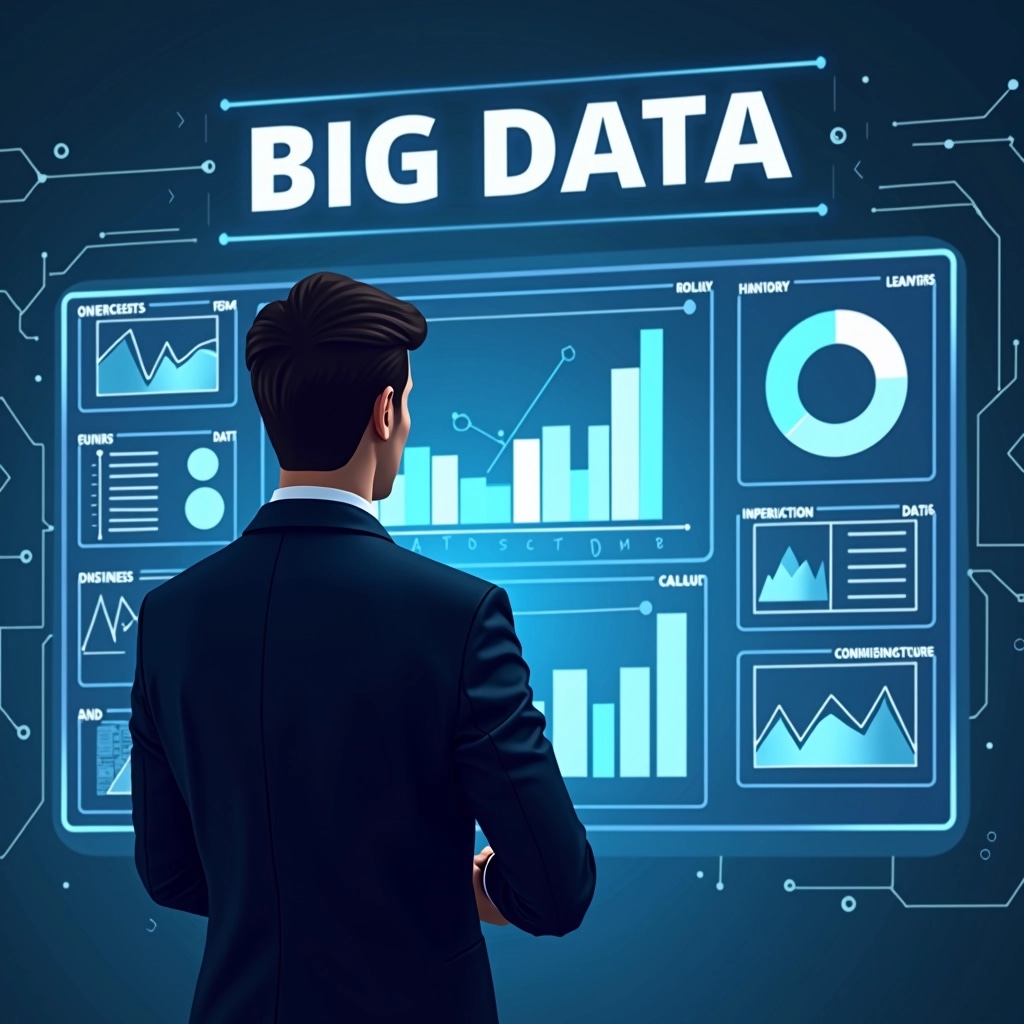In today’s rapidly evolving world, data is everywhere. From the moment we wake up and check our smartphones to when we order food or track our fitness goals, data is being generated at every step. The game-changer here is not just the amount of data being collected, but how businesses and industries are using this vast amount of information to drive innovation. Enter big data—a term that’s been gaining a lot of attention and for good reason.
Big data is transforming industries by providing insights that were previously impossible to uncover. It allows companies to make smarter decisions, create new products, improve services, and even predict the future. In short, it’s reshaping how businesses think, operate, and innovate. Let’s dive into how big data is driving innovation across various industries.
What is Big Data?
Before we get into the impact, let’s clarify what big data really means. Big data refers to extremely large datasets that are too complex or voluminous for traditional data-processing software to handle. These datasets come from a variety of sources—social media interactions, transaction records, IoT devices, customer feedback, and more. But big data isn’t just about size; it’s about analyzing this information to uncover hidden patterns, correlations, and trends that can fuel innovation.

As the volume, variety, and velocity of data continue to grow, businesses are leveraging advanced technologies like artificial intelligence (AI), machine learning, and data analytics to make sense of this data and turn it into actionable insights.
1. Healthcare: Revolutionizing Patient Care and Treatment
One of the most exciting areas where big data is making a significant impact is in healthcare. The healthcare industry generates enormous amounts of data from patient records, medical images, lab results, wearable devices, and even social determinants of health. With big data, healthcare providers can harness this information to improve patient outcomes, reduce costs, and even predict and prevent diseases before they occur.
For example, big data analytics can analyze patient history and lifestyle data to create personalized treatment plans. It can also track the effectiveness of treatments across large populations, enabling healthcare professionals to find the best courses of action for various conditions. Predictive analytics can forecast disease outbreaks or anticipate when a patient’s condition might worsen, allowing for timely interventions.
Moreover, big data is accelerating drug discovery. Researchers use big data to analyze genetic information, study how diseases evolve, and identify potential treatments much faster than traditional methods. This means we’re not only improving patient care today, but we’re also pushing the boundaries of medical innovation for the future.
2. Retail: Personalizing the Customer Experience
Big data is transforming the way businesses in the retail industry engage with their customers. With the massive amounts of data available from online shopping behavior, social media activity, and in-store interactions, retailers can create highly personalized experiences that drive loyalty and increase sales.
For example, recommendation engines, like those used by Amazon or Netflix, analyze past purchases, browsing behavior, and preferences to suggest products or services that customers are likely to enjoy. This personalization makes the shopping experience feel more tailored, increasing customer satisfaction and boosting sales.
Additionally, big data helps retailers optimize their operations. They can track inventory in real-time, forecast demand more accurately, and streamline their supply chains. This not only improves efficiency but also reduces waste and minimizes costs, creating more sustainable business practices.
Even in physical stores, retailers are using location-based data to send targeted promotions to customers’ smartphones when they are nearby. The goal is simple: to make the shopping experience as seamless and relevant as possible, resulting in more satisfied customers and better sales performance.
3. Finance: Enhancing Risk Management and Customer Insights
The financial sector has long relied on data to make decisions, but the rise of big data is taking things to the next level. With vast amounts of data coming from transactions, social media, customer profiles, and market trends, financial institutions can now analyze this information to make more informed investment decisions, manage risks better, and enhance customer experiences.
Big data analytics allows financial firms to identify patterns in customer spending habits, predict future market trends, and detect fraudulent activity much more accurately. It’s no longer just about analyzing numbers—it’s about understanding the stories behind those numbers.
Moreover, personalized financial products are becoming increasingly common. By analyzing customer data, banks can offer tailored services like custom investment portfolios or loan options based on an individual’s financial behavior and goals. This helps build deeper customer relationships and opens up new revenue streams.
In the world of insurance, big data is transforming the underwriting process by enabling more accurate risk assessments. Companies are using data from a variety of sources—like driving habits, health records, and even weather patterns—to create dynamic pricing models that better reflect individual risk profiles.
4. Manufacturing: Optimizing Production and Innovation
In the manufacturing industry, big data is driving efficiency and innovation in ways that were previously unthinkable. With the advent of smart factories and the Internet of Things (IoT), manufacturers now have access to a treasure trove of real-time data from machines, sensors, and production lines.
This data is being used to optimize production processes, improve supply chain management, and reduce downtime. For instance, predictive maintenance powered by big data can forecast when a machine is likely to fail, allowing companies to perform maintenance before costly breakdowns occur. This reduces operational disruptions and ensures that manufacturing processes run smoothly.
Big data is also helping manufacturers innovate by providing insights into product quality and customer feedback. By analyzing this data, companies can improve their existing products, design new ones, and even predict future market trends. The combination of data-driven decisions and innovation leads to better products that meet consumer needs more effectively.
5. Transportation: Improving Efficiency and Safety
Big data is also playing a major role in transforming the transportation and logistics industries. With vast amounts of data coming from vehicles, traffic patterns, GPS systems, and customer demand, transportation companies can improve their services and reduce inefficiencies.
For example, ride-sharing services like Uber and Lyft use big data to match passengers with drivers in real time, optimizing routes and reducing wait times. Additionally, these companies can analyze data on traffic patterns and weather conditions to predict the best times and routes for travel, improving both driver and passenger experiences.
In logistics, big data is being used to optimize supply chains and track goods in real time. Companies can predict demand, manage inventory more effectively, and ensure that products are delivered on time. Big data is also improving vehicle safety by monitoring driver behavior, vehicle performance, and road conditions in real time, enabling proactive safety measures.
6. Entertainment: Transforming Content Creation and Distribution
The entertainment industry has been transformed by big data, particularly in how content is created, distributed, and consumed. Streaming services like Netflix, Spotify, and YouTube rely heavily on big data to understand user preferences and deliver personalized content recommendations.
By analyzing what viewers watch, listen to, and interact with, these platforms can curate suggestions that keep users engaged and improve their experience. But big data goes beyond just recommendations—it’s also reshaping how content is produced. Entertainment companies are using data to analyze trends and predict what kinds of shows, movies, or music will resonate with audiences, guiding investment decisions.
Even marketing strategies are being influenced by big data. Entertainment brands can target specific demographics with personalized ads, track how content is performing in real-time, and adjust their strategies accordingly.
Conclusion: Big Data is the Key to Future Innovation
From healthcare and finance to retail and entertainment, big data is not just a buzzword—it’s a powerful tool that’s driving innovation across industries. By harnessing the power of data analytics, companies can make smarter decisions, optimize their operations, and create better experiences for their customers.
As technology continues to evolve, the potential for big data to fuel further innovation is virtually limitless. As businesses and industries continue to embrace data-driven strategies, the world will see even more groundbreaking discoveries, smarter solutions, and transformative changes that shape the future.
The future is data-driven, and big data is at the heart of it all.











